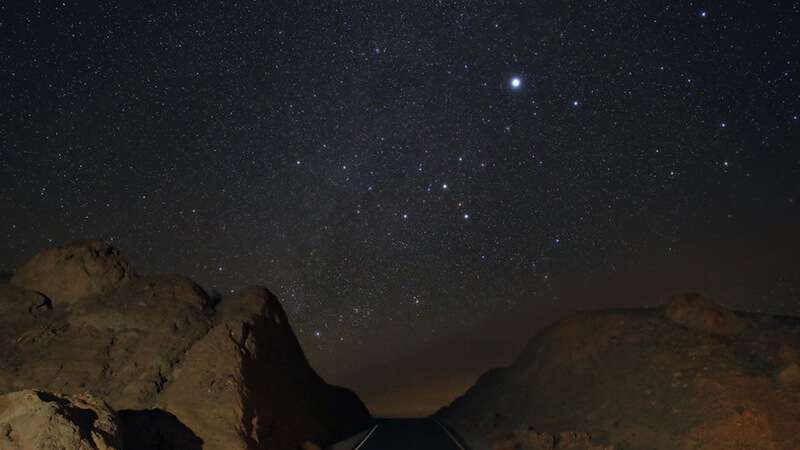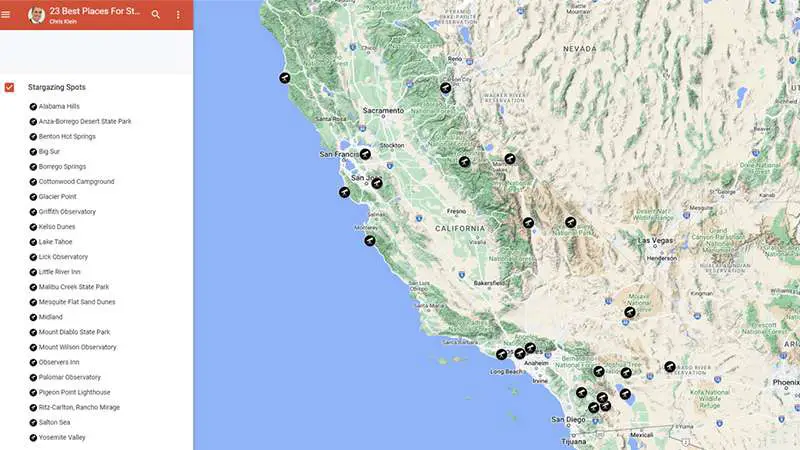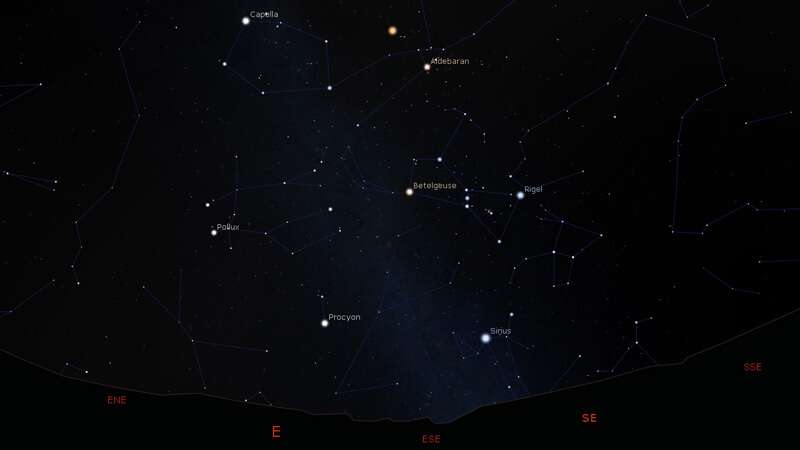Have you ever explored the night sky in California and wondered which star is the brightest? If so, you’re in luck! I’ll tell you everything you need to know about the brightest star in the sky in California.
The brightest star in the sky in California is called Sirius. It is in the constellation Canis Major.
But did you know there are stars brighter than Sirius? It’s true.
The reason Sirius appears brighter is that it’s closer to us.
Keep reading to learn more.
In this article, you get
Information about Sirius, the brightest star in the night sky over California
A quick look at some mythology of Sirius
Where to find Sirius in the sky
The difference between Sirius A and Sirius B
By the end of this article, you’ll know all about Sirius, the brightest star in California, and more.
Let’s dive right in.
Recommended For You
WHAT IS THE BRIGHTEST STAR IN THE SKY IN CALIFORNIA?

The brightest star in the night sky in California is called Sirius.
It has an apparent magnitude of -1.46, which makes it 20 times brighter than our Sun.
It is 8.6 lightyears away.
WHERE IS SIRIUS IN THE NIGHT SKY IN CALIFORNIA?

In California, you can find Sirius in the night sky in the constellation of Canis Major. The photo above was taken in Death Valley National Park. Death Valley is one of the best places for stargazing in California.

FREE STARGAZING CHECKLIST
My 5-page Stargazing Checklist will enhance your astronomical observations.
Follow this free checklist to navigate the night sky with confidence, clarity, and a sense of preparedness for a rewarding stargazing experience.

Sirius lights up the sky with its intense bluish-white light. With its bright light, you can easily spot it near the horizon and use it to guide you to other constellations, such as Orion’s Belt and the Winter Hexagon.
The Winter Hexagon is a group of stars that form a hexagon shape in the night sky, with Sirius being its brightest star.
WHAT IS THE MAGNITUDE OF SIRIUS?
Apparent magnitude (m) measures how bright a star appears.
It is a numerical value assigned to a star based on its brightness, as seen from our perspective.
APPARENT MAGNITUTDE (M)
A higher positive value means a star is fainter, while a larger negative number is brighter.
Sirius has an apparent magnitude of -1.46.
In comparison, the Sun has an apparent magnitude of -26.7. The full Moon has an apparent magnitude of -12.6. The planet Venus, at its brightest, has an apparent magnitude of -4.4.
The Sun is approximately twice as bright as the full Moon. The difference between the two magnitudes is 14.1, corresponding to a brightness factor of about 450x. The Sun is around 450 times brighter than the full Moon.
The magnitude scale dates back to ancient times, and it is essential to note that this measure does not represent the actual luminosity of the star, which other methods can only determine.
DISCOVER THE MYTHOLOGY AND SCIENCE OF SIRIUS
Sirius derives from the Greek word Seirios, meaning “glowing” or “scorching.”
ANCIENT GREEK
In Ancient Greek mythology, Sirius is the god Orion’s faithful hunting dog.
NORSE
In Norse mythology, Sirius was a gift from Freya, the goddess of love.
CHINESE
In China, Sirius was a symbol of power and strength.
LOOK FOR THE WINTER HEXAGON AND MARS IN THE NIGHT SKY

If you’re looking for a stunning night sky experience in California, you will want to experience the Winter Hexagon.
The Winter Hexagon is an asterism that appears in the night sky like a hexagon, with its vertices composed of Rigel, Aldebaran, Capella, Pollux, Procyon, and Sirius. All are among the brightest stars in the sky.
It is visible in the Milky Way in California. To learn more about the Milky Way, read my article Can you see the Milky Way from Los Angeles?
Fiery red Betelgeuse is another highlight of the northern hemisphere winter evening sky, with an apparent magnitude of 1.14.
Being so bright, Sirius dominates the winter hexagon’s lower portion.
Sirius will be low on the horizon in California.
SIRIUS A AND SIRIUS B
Sirius A, or just Sirius, is the brightest star in Earth’s night sky.
Its companion, Sirius B, is 10,000 times dimmer than Sirius A.
Sirius B is a white dwarf star. It was first discovered in 1862 by a team of U.S. researchers using a newly developed great refractor telescope. Sirius B’s mass is 98 percent of the Sun’s mass, and its luminosity is so dim that it was difficult to measure until data from the Hubble Space Telescope became available in 2005.
Astronomers have studied Sirius A and B for centuries, and they are still being studied today by NASA with their Transiting Exoplanet Survey Satellite (TESS).
FREQUENTLY ASKED QUESTIONS
what is the brightest star in the night sky?
The brightest star in the night sky as seen from Earth is Sirius. It’s part of the Canis Major constellation and is often referred to as the “Dog Star.” Sirius shines brilliantly due to its proximity to Earth and its intrinsic brightness, making it a prominent object in the night sky.
IS THERE A STAR BRIGHTER THAN SIRIUS?
Yes, there are stars brighter than Sirius. Scientists have found at least three stars in the constellation Canis Major that are thousands of times more luminous than Sirius. These stars are Aludra, Wezen, and Omicron 2, estimated to be 3,000-2,000 lightyears from Earth. If all the stars were equally distant from Earth, these three stars would outshine Sirius by 100 to 200 times.
WHY IS SIRIUS THE BRIGHTEST STAR
Sirius is the brightest star seen from Earth because it is about 25 times more luminous than our Sun and is only 8.6 lightyears away from us. Its tiny companion, Sirius B, also contributes to its brightness. Furthermore, its light passes through a thicker blanket of air when seen from the Northern Hemisphere, which can produce flashes of intense color as it twinkles.
SUMMARY: Brightest Star in California
Thank you for reading my article on What is the brightest star in the sky in California.
The brightest star in California’s night sky is called Sirius. You can find it in the constellation Canis Major.
It is 8.6 lightyears away from Earth.
Sirius is often called the Dog Star, the brightest star in the Canis Major constellation.
Additional articles about California you may enjoy.
These are all part of my USA Guides series:




